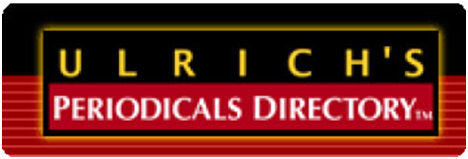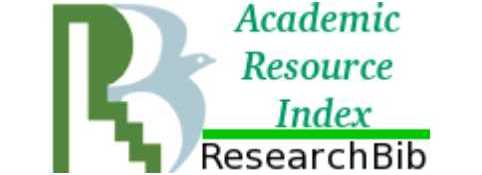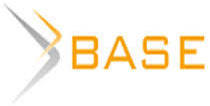СПЕЦИФИКА ЛИНГВОГЕНЕТИЧЕСКИХ ИССЛЕДОВАНИЙ: СРАВНИТЕЛЬНО-ИСТОРИЧЕСКИЙ И ИСТОРИЧЕСКИЙ МЕТОДЫ
Aннотация
Сравнительно-исторический метод является важнейшим инструментом познания языковой истории, который имеет свою специфику и конкретную сферу использования. Этот метод целесообразно рассматривать как сложную единицу, которая включает три компонента: онтологический, операциональный и телеологический. Целью сравнительно-исторического исследования (телеологический компонент) является воспроизведение моделей праязыковых состояний семей и групп родственных языков, их дальнейшего развития и членения на самостоятельные языки, а также создание сравнительно-исторического описания (грамматик и словарей) родственных языков. Онтологический компонент сравнительно-исторического метода представляют конкретные принципы (принцип историзма, принцип причинности, принцип системности и принцип общей связи явлений) и подходы (исторический, причинный, системный). Операциональный компонент сравнительно-исторического метода представлен такими приемами и процедурами как: 1) генетическое отождествление фактов; 2) лингвистическая реконструкция архетипа и фонетического закона; 3) хронологизация и локализация языковых явлений. Сравнение разных фактов и их совокупности как в пределах одного языка, так и в масштабах языковой группы, дает возможность лингвистической экстраполяции в прошлое. В практике современных сравнительно-генетических исследований важную роль играет процедура лингвистической реконструкции. Научная литература выделяет три ее вида: внешняя, внутренняя и филологический метод. Очевидно, что основным заданием генетических исследований является изучение процессов исторического развития родственных языков или отдельно взятого языка. Предметом дискуссий на сегодняшний день остается вопрос об объеме вхождения инноваций отдельных языков в сферу компетентности сравнительно-исторического метода.Ключевые слова: метод, онтологический компонент, операциональный компонент, телеологический компонент, сравнительно-исторический метод, исторический метод, лингвистическая реконструкция, сравнение
К сожалению, текст статьи доступен только на Английском
In modern linguistics, the methods of genetic research can be easily misidentified with the comparative-historical method. However, contemporary genetic research widely include the comparative-historical as well as other methods, such as quantitative, statics, the method of linguistic geography [17, p. 80-81; 11, p. 84-101]. The crucial thing is also the fact that the comparative-historical method is the most important instrument for the cognition of language history, that possesses, firstly, certain features and, secondly, some constraints of implementation [12, p. 6].
The comparative-historical method should be interpreted as a complex unit that contains three diverse components: ontological, operational and theological.
The main purpose of the comparative-historical method (a theological component) is to reconstruct the antecedent models of allied languages families and groups, their further development and division into separate languages, and creation of the comparative-historical description of allied languages (grammars and dictionaries) [10, p. 485].
The specific principles (the principle of historicism, the principle of causality, consistency principle and the principle of universal connection of phenomena) and the approaches (historical, causal, systematic) constitute the ontological component of comparative-historical method [2, p. 15].
The operational component of the comparative-historical method is represented by such methods and procedures as: 1) genetic equation of facts, 2) linguistic reconstruction of the archetype and phonetic linguistic law, 3) chronology and localization of linguistic phenomena [5. p. 6, 58-59; 6, p. 9, 29].
Undoubtedly, the comparison is the dominant universal technique of the comparative-historical method [12, p. 11, 25; 6, p. 12; 11, p. 38-39; 15, p. 229-235]. Uneven changes occurred in different levels of one linguistic structure and throughout some representatives of lthe anguage family, archaisms and innovations available are a diachronic linguistics axiom. That is why there is a constant possibility of extrapolating the past linguistic databases based on comparison of different facts and their combination either within one separate group, or through the whole linguistic group perspective [6, p. 12].
A procedure of linguistic reconstruction plays a rather significant role in the practice of modern comparatively genetic studies. For sure, the reconstruction is the most essential part of the comparative-historical method [8, p. 202]. Three kinds of linguistic reconstruction are distinguished in scientific literature: external, internal and the philological method [5, p. 47; 6, p. 25].
Definitely, the primary goal of genetic research is to outline the historical process development of allied languages or the separate language [6, p. 11-12]. Nowadays only the issue of the scope of innovations in certain languages entering the jurisdiction of comparative-historical method is argued [6, p. 12].
Thus, the purpose of the article is to resolve the matter of inverstigation of the specifics of historical and comparative-historical methods. To achieve this goal, we need to solve the following key objectives: 1) to reveal the views of modern comparative scientists on the problem; 2) to find out the content unnoticed by researchers; 3) to explore the characteristics and scope of external, internal reconstruction and the “philological method” application; 4) to define the criteria for distinguishing each of these procedures. It is known that some scientists oppose two lingvogenetic methods – historical and comparative-historical [4, p. 105]. O. T. Hrolenko suggests that linguistics has a gradual transit from allied languages to separate language comparison. Thus, the historical method has developed within the other lingvogenetic method – comparative-historical [ibid]. Both methods are based on the principle of historicism, and use common set of techniques and procedures. That, according to O. T. Hrolenko, contributed to the fact that they are usually not delineated [4, p. 105].
However, the scientific literature contains a number of statements claiming that the study of the historical past of a particular language has specific features: the historicity point increases, relative chronology combines with precise historical boundaries, comparison is limited to one language. In addition, phonetic and morphological word structure seems diverse for different periods of language development. It is therefore appropriate to extract the historical method [7, p. 263].
Thus, the historical method is limited to one language and captures the attention to separate language tiers – phonetics, morphology, syntax, vocabulary. Practical achievements of this method are embodied and fixed in historical grammars of languages.
The techniques of historical method led to comparative methods for phenomena considered throughout various stages of language development and are interpreted in a proper manner. The historical method is the most effective sphere of the internal reconstruction implementation [4, p. 106; 7, p. 265].
Modern comparative studies pay thorough attention to both the theory and the practice of reconstruction; gradual transition from external reconstruction to internal one is the main subject of its interest [16, p. 68].
Internal reconstruction opposes an external one in a fundamental difference of the empirical base [5, p. 48]. Internal reconstruction is deliberately limited by the material of specific language in its historical development. It is aimed at analyzing the correlations within the language, the disclosure of internal communications and relations between elements of the language system only in static and dynamic aspects. The material for external reconstruction consists of the allied languages facts [16, p. 69].
The methods of external reconstruction likewise a diverse amount of internal reconstruction techniques are characterized by a unified technology of research. A typical scheme of external reconstruction procedures includes: 1) the comparison of identical or semantically similar units; 2) the defying of a systematic correspondence between their materials; 3) the establishment of a chronological relationship between the material of the comparable units and 4) the withdrawal of proforma [5, p. 48].
For internal reconstruction technique it is important to have the existence of simultaneously certified language system events, reflecting different stages of the history of the system. This methodology includes a combination of various techniques: 1) the reception system restores missing links; 2) an acceptance of typological implications; 3) an acceptance of remnants analysis [5, p. 49-50]. In the case study of languages with prolonged tradition of writing a “philological method” can be a type internal reconstruction [5, p. 50].
The “philological method” is based on an analysis of ancient written records, which have those linguistic forms that are important for the subsequent history of the language. Obviously, this method allows rebuilding archetypes through an appropriate interpretation of the elements of the written text. From our point view, the basic techniques of the “philological method” are: 1) criticism (review) manuscript; 2) the attribution and interpretation of the text; 3) classification of texts (manuscripts, books) [13, p. 412].
Taking into account the very limited area of the usage of the “philological method” and the fact that the ontological nature of linguistic phenomena recovered by written monuments requires interpretation by attracting these modern linguistic states, its small place in the comparative genetic studies is pretty obvious [5, p. 47-48].
The scientific literature contains the statements that the results of both reconstructions, external and internal, in many cases have a timeless character. Thus, certain elements or entire system fragments reconstructed are mostly projected onto the antecedent sphere. Reconstruction remains dynamic concerning possible suggestions [8, p. 203]. This is true only for the external reconstruction, where the relative chronology is a classification: the Baltic-Slavic phenomenon, Slavonic phenomena etc. [16, p. 88].
Another thing related to the chronology is based on the internal data reconstruction. Comparison of the two phonetic laws allow to define: only one of them could act previously. This enables them to establish a chronological hierarchy [ibid].
So if the external and internal reconstruction can establish a relative chronology of linguistic phenomena, the “philological method”, based on data from ancient written records is absolute [13, p. 412].
Provided those facts it is proved that the separation between the two lingvogenetic methods – historical and comparatively historical is a contrasting procedure and the internal reconstruction of the “philological method” to the external reconstruction procedure.
It is necessary to note that the internal reconstruction is also comparable as the external one. V. K. Zuravlev states that these are the two sides of the same comparative-historical method, whose essence is compared to a related morpheme: in the case of external reconstruction different language material (related to) a language is used, and in the process of internal reconstruction – different versions of the same morpheme in the same language [16, p. 70].
Comparative analysis of the current state has showed that the reconstruction is based on a material number of languages, it appeared to be eclectic and the data in two languages – to be incomplete [8, p. 92]. The way out of this paradoxical situation can only be a combination of methods of external and internal reconstruction [ibid].
Although the internal and external reconsruction are substantially different, at the same time they are going to meet one another. Internal reconstruction is based on the analysis of the synchronous states of one language, it is retrospective, that is directed from the present to the past. Internal reconstruction focuses on irregular facts considering the principle of systems [16, p. 72].
External reconstruction, according to V. K. Zhuravlev, is generally prospective and directed from the past to the present [16, p. 73]. It focuses on finding relics antecedent languages, on the establishment of the its fate stuck to the single language between the branches of the “family tree”, searching for the reflexes of the inherited condition [ibid]. It is known that exactly such a last condition is reconstructed being based on the commonly oldest facts of allied languages.
However, in lingvohistorical literature we find a series of statements about the retrospective nature of external reconstruction [2, p. 60, 61, 126, 129]. According to V. A. Glushchenko, the studying of the Kharkov and Moscow language schools scientific heritage shows that the reconstruction in their developments is claimed to be retrospective [ibid].
An illustration of the retrospective nature of the reconstruction of the historically phonetic research scientists of Kharkiv schools can be such processes that took place in the history of the Ukrainian language as the appearance of voiced affricate (in the interpretation of A. A. Potebnya), diphthongs processes of о, е is closed syllable (in the interpretation of O. O. Potebnya and P. G. Zhytetsky) [2, p. 60]. Examples of retrospective reconstruction phases in the evolution of sound interpretation due to the Moscow School of scientists are, in particular, research of P. F. Fortunatov and O. O. Shakhmatov as for changes je> o at the beginning of the word [2, p. 126].
Reliability of research results of Kharkov and Moscow language schools scientists is linked to a focus primarily on the modern dialect data and retrospective nature of linguistic reconstruction [2, p. 129].
Assuming the facts provided we would like to note that the external reconstruction may have either prospective, or retrospective nature [14, p. 183].
It is known that the facts produced by internal reconstruction can sometimes come into conflict with external data reconstruction. That is why both types of reconstruction should complement each other. Phonetic laws should be carefully monitored according to both external and internal renovation.
The benefit of external and internal reconstruction has recently changed to some extent. The possibilities of internal reconstruction are highly appreciated due to advances in the history research of separate languages. Therefore, in the modern comparative genetic research the achievements of internal reconstruction are quite significant. Still it is remained to be limited the scope of usage of the “philological method”.
Thus, the most complete conception of the historical development of a particular language and linguistic group is formed only in a situation where all three types of reconstruction acted within the comparative-historical method are organically interacted.

















Список литературы
Список использованной литературы появится позже.